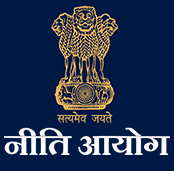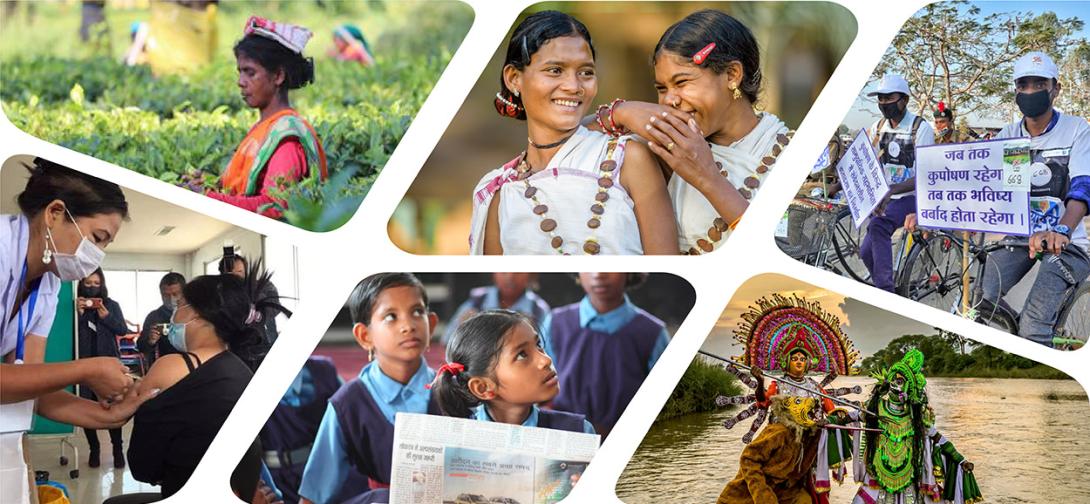India's Education Sector is Ripe for Disruption by AI
Home to one-sixth of the world's population, India is bound to play a leading role in determining the global success of the SDGs. By 2030, India will have the largest number of young people in the globe, a population size which will be a boon only if these young people are skilled enough to join the workforce. The recently launched SDG Index 2019-2020 by Niti Aayog assigned a composite score of 58 to India under the SDG on Quality Education, with only 12 states/UTs having a score of more than 64. The current government expenditure on education is less than 3% of the GDP and the pupil-teacher ratio for elementary school stands at 24:1, lower than that of comparable countries such as Brazil and China. Further, with the rapidly increasing population and dwindling resources, it would not be possible to match the demand for teachers.

There is a need for a bottom up approach - the SDGs will have to be localized at the grass root level. As we enter the last decade to achieve the targets set by the UN, there is a need to propel the progress towards these goals and a key step to achieve the same would be monitoring their indicators on a real time basis. The 'Transformation of Aspirational Districts' programme has shown how monitoring and tracking the targets to rank the districts can promote healthy competition among the districts, encouraging each of them to achieve the set mandates. The momentum needed to accelerate the progress towards these goals will be provided by Artificial Intelligence (AI) that will be a gamechanger in converting these aspirations into achievements. The unprecedented availability of data points in the second-most populous country of the world coupled with access to heavy computational power could potentially make India one of the strongest beneficiaries of the AI wave. Once initiated and operationalized, the AI-powered systems are only going to get better as they learn more and more data is available.
One of the targets under the agenda of Quality Education says that by 2030, our nation must substantially increase the supply of qualified teachers. While it may not be possible to fill the large demand-supply gap that exists, it is possible that the teachers be made more efficient. Here are some ways AI can do so:
Real-time text to speech and text translation systems can be used to disseminate information seamlessly in the regional language, in line with the Draft National Education Policy 2019 that has encouraged learning of mother-tongue languages. These translation systems can be integrated with DISKHA, Digital Infrastructure for Knowledge Sharing, the digital infrastructure that has been set up by MHRD or with e-PATHSHALA, (initiatives under the Sarva Shiksha Abhiyaan). For example, if a textbook on E-PATHSHALA is available only in Hindi, text translation services can make it available in other regional languages and make it more accessible. Because of these language translation systems, the language barrier could be removed and the inter-operability of teachers across states can be achieved, helping meet the demand better than previously.
Biometric authentication: Mundane and support tasks of the teacher – attendance and other administrative tasks- can be taken over by AI. For example, biometric authentication for the students can be introduced and integrated with UDISE+ (Unified District Information System for Education) – an application that is one of the largest Management Information Systems on School Education. The biometric attendance records could also be used as a proxy for inclusiveness of the education in the district/state/block and can be easily tracked, helping monitor the national indicators such as participation rate of youth and adults and proportion of male-female enrolled in higher education, technical and vocational education. This can help monitor the quality of education in the school.
Chatbots: In a country as diverse as India, integration of chatbots in the digital infrastructure or availability via IVRS system education domain could be transformational – they could be trained on subject matter and a good percentage of doubts of the students could be answered instantly, thereby reducing current workload of teachers who could focus on more creative tasks. Mobile penetration would not be a hindrance here as it is being driven by rural India, the number of internet users in Rural India is expected to reach 290 million by the end of 2019.
Automated grading: With Draft National Education Policy 2019 prioritizing online learning in its agenda, machine learning methods such as Natural Language Processing could be used for automated grading of assessments on a large scale on platforms such as DIKSHA, E-PATHSHALA and SWAYAM (Study Webs of Active Learning for Young Aspiring Minds) - not just objective questions but subjective ones as well. Automated creation of content is another field where AI can intervene – given large sources of information on the internet, NLP techniques will be able to use Automatic Text Summarization to create crisp content and publish them on these e-learning websites. The standard unified curriculum created by ML-based methods will be in line with the nationally defined learning outcomes (MHRD has designed a 70 indicators-based matrix called Performance Grading Index (PGI) to grade the states and UTs) and will objectively help evaluate indicators on the percentage of students achieving at least a minimum proficiency level.
Personalization: When such content is in place on these e-learning platforms, personalized feedback and recommendations at a large scale could be possible: Currently, it is not possible to provide individual attention to every student. However, when content is created and graded by AI, it would ensure personalized avenues of learning for the children by identifying pain points for the students and providing recommendations accordingly. Essentially, educational infrastructure powered by AI would give each student of India a personalized tutor.
Supervised classification models to reduce drop-out rates: When AI systems provide personalized feedback, we can curb the all India drop-out rates that stand at 4% at the primary level but rise to 20% in higher education. As these personalized tutors continue to collect data points at each juncture in the child's education journey, classification ML models could be used to predict the children at risk of dropping out and proper redressal mechanisms can be put in place. A culmination of these activities would help a higher education enrolment ratio and make sure a substantial proportion of adults achieve literacy, mandates in line with targets under this SDG.
Pattern detection to increase Inclusiveness: Targets revolving around elimination of gender disparities in education and inclusion of persons with disabilities can be influenced positively with the use of AI – not only are Apple's Siri and Amazon' Alexa becoming pronounced among the urban section of the society, allowing the visually impaired users to be more participative, but near real-time text to speech systems are allowing the mute to have active information exchange. To support Inclusive Education for Children with Special Needs (CWSN) Children under the Samagra Shiksha program of MHRD, children affected with autism, Parkinson's disease or any other disease that results in a speech disorder could benefit by integration of machine learning models in the e-learning websites that detect speech patterns, augment the speech by correcting mispronunciations or broken words and then output the same in an audio or a text format. Additionally, in today's system, certain educational institutions may have inherent implicit biases, knowingly or otherwise, such as selecting more students of one gender or having policies inhibiting equal opportunities for certain indigenous groups. However, machine learning algorithms can be set up to aid and monitor enrolment and be explicitly programmed to get rid of such biases. For example, selection criteria for jobs can involve a screening by such AI systems to ensure the process is just, a system that will become a precursor to inclusive education.
To conclude, the education sector in India has opened and will continue to open multiple avenues of AI intervention. It could be a difficult road for the nation to achieve the targets under the SDG on Quality Education without harnessing this superpower, often believed to be the new electricity for the 21st Century. A skilled workforce will be crucial if India must become a US$ 5 Trillion economy by 2024.
*Abhijay Arora was an intern (SDG Vertical), NITI Aayog. Views expressed are personal.
 National Portal Of India
National Portal Of India 







